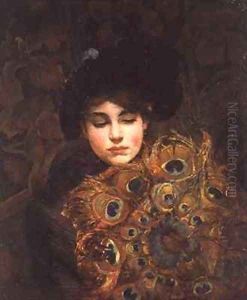Mary Henrietta Curtois Paintings
Mary Henrietta Curtois, born in 1842 and passing away in 1937, was an English artist whose life and work spanned the Victorian era into the early 20th century. Though not as widely recognized as some of her contemporaries, Curtois made significant contributions to the British art scene, particularly in the realms of painting and watercolor. Her work, which often depicted landscapes, religious themes, and portraits, reflects the period's shifting attitudes towards art, gender roles, and spirituality.
Curtois was born into an era when the art world was predominantly male-dominated, making her achievements as a female artist particularly noteworthy. She pursued her passion for art at a time when women were beginning to assert their presence in the arts, albeit facing considerable barriers. Despite these challenges, Curtois managed to carve out a space for herself, showcasing her work in various exhibitions and gaining recognition among her peers and the public. Her style, characterized by a delicate use of color and attention to detail, resonated with the aesthetic sensibilities of the late 19th and early 20th centuries.
Throughout her career, Mary Henrietta Curtois participated in numerous exhibitions, including those held by prestigious institutions such as the Royal Academy. Her ability to navigate the complexities of the art world of her time, coupled with her dedication to her craft, allowed her to make a lasting impact on the British art scene. Curtois' legacy, though perhaps not as widely celebrated as that of some of her contemporaries, remains an important reminder of the contributions women have made to art history. Her works continue to be appreciated by art historians and collectors, serving as a testament to her skill and perseverance in an era that was often unkind to women artists.
